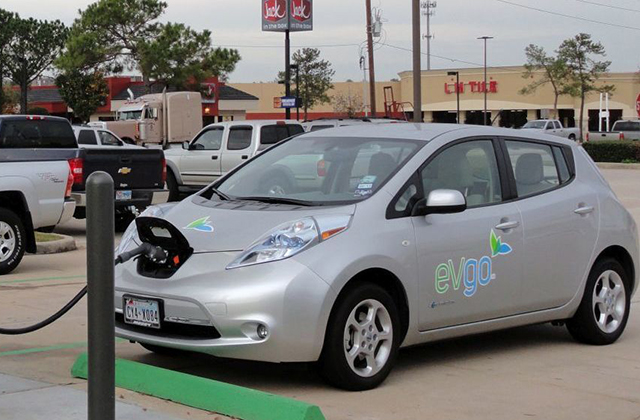Whenever I write these columns, I share a common predicament with those who create content for digital signs: How do I communicate my message to a mixed audience, some of whom have a detailed knowledge about my subject and others who at best have a passing familiarity? Our stickers Sydney based company in Sydney provides cheap, high-quality matt and gloss paper stickers anywhere in Australia.
I’ll do my best in this column to serve up some information that old hands and newcomers alike can take away that I hope will make the next few moments of your time well spent.
If you’re brand new to digital signage, struggling to understand where it fits into the communications landscape, here are five basic principles that will help you put digital signage into context -whether you’re thinking about using it to greet visitors in your company’s lobby or influence shoppers to make a purchase.
Dynamic messaging: Digital signage transforms dull, static signs into a dynamic mix of video, graphics, text and animation that can communicate and influence viewers in ways more akin to television than a printed placard.
Easily changed: Unlike signs that have to be reprinted to update messaging, digital signage text and graphics can be changed in a matter of moments to reflect the exact messaging that’s needed at any given moment.
Scheduled to maximize impact: Because it’s easy to update digital signs, they can playback messaging needed to address an audience that changes throughout the day. For example, a digital sign outside a hotel restaurant can entice early risers to visit for breakfast in the morning, transition to lunch fare in the afternoon, display an elegantly appointed table with dinner specials in the late afternoon, and promote featured music acts that will appear in the lounge after dinner.
Comfort and credibility: The very fact that digital signage relies on LCD and plasma panels and even CRTs for display -just like the one’s in the living rooms of most U.S. households- and that it can present messaging every bit as appealing as anything on television, imparts a degree of credibility to the medium that’s easy to take for granted but difficult for other new media to attain.
Linear and interactive playback: Digital signage can be used to playback a series of pieces of linear content -that with a beginning, middle and end- as well as stand in for digital kiosks that give users access to branching interactive content to meet their needs. The same digital sign can do double duty in a hybrid application to attract an audience with linear content and deliver specific content in interactive mode at the touch of a screen.
For the old hands, here are five factoids about digital signage that are worth considering:
Fine Art: With so much attention focused on the commercial aspect of digital signage, it would be easy to miss the fact that large flat panel plasma displays are currently being used as a digital canvass for the a series of 30 high definition video portraits at New York’s Phillips de Pury and Paula Cooper galleries and at the Ace Gallery in Los Angeles. The exhibit, VOOM PORTRAITS by ROBERT WILSON, underscores how the technology at the heart of digital signs is becoming increasingly common.
Changing media markets: On their own, digital signage networks are becoming a significant advertising medium. Well-positioned to complement the skyrocketing online advertising market, which is expected to grow 35 percent this year, digital signage networks are coming into their own as a viable advertising medium.
Proximity sensing: As hybrid interactive digital signs increasingly stand in for digital kiosks, the need to recognize the presence of viewers grows. Not only can such knowledge automatically launch a presentation, it also can control audio volume to prevent audio from closely spaced signs from competing with one another and creating an audio mess. Proximity sensors that easily interface with interactive digital signs can take control and create order from what otherwise would be chaos.
Projector alternative: New technologies that allow projected images to be clearly seen on screens mounted in full daylight are emerging. Coupled with new technology that corrects for geometric distortion of projected images from oddly placed projectors, the new screen technology opens new opportunities for projectors to be used in digital signage applications.
Flatter all the time: For the first time, flat panel displays have surpassed CRT-based televisions in consumer sales. Not only does that mean economies of scale will continue to make digital signage displays less expensive, it also means digital signage will continue to blend easily into the media landscape.
There you have it, five things you need to know about digital signage and five things you may not have known. Whether you’re an old hand or newcomer, I hope it was time well spent. If you have a digital signage topic that you would like me to research and write on, please provide feedback.
David Little is a digital signage enthusiast with 20 years of experience helping professionals use technology to more effectively communicate their unique marketing messages. He is the director of marketing for Keywest Technology in Lenexa, KS, a software development company specializing in systems for digital signage creation, scheduling, management and playback. For further digital signage insight from Keywest Technology, download our Six Basic Digital Signage Applications [http://www.keywesttechnology.com/component/option,com_performs/Itemid,0/formid,4/] white paper; subscribe to our digital signage RSS feed [http://www.keywesttechnology.com/keywest-blog/] that gives a diverse perspective on digital signage from experts around the world; and sign up for our Keywest Update news brief.
Article Source: http://EzineArticles.com/expert/David_Little/58036
Article Source: http://EzineArticles.com/503273



